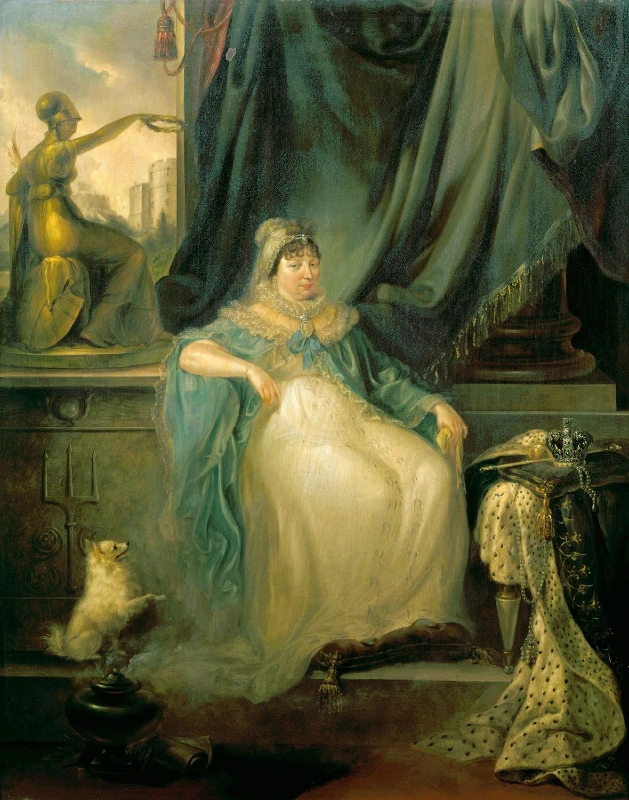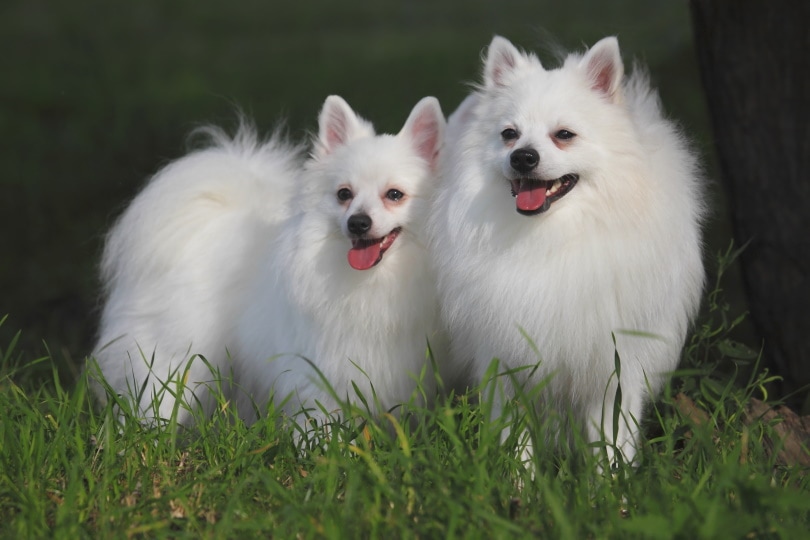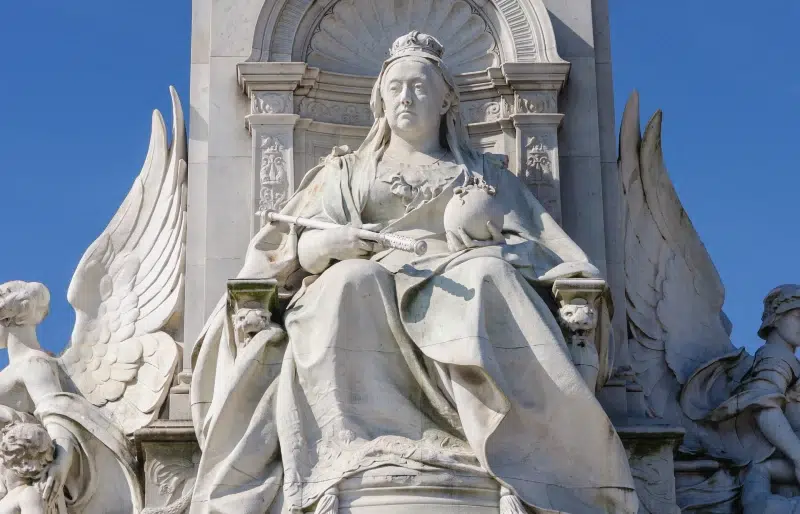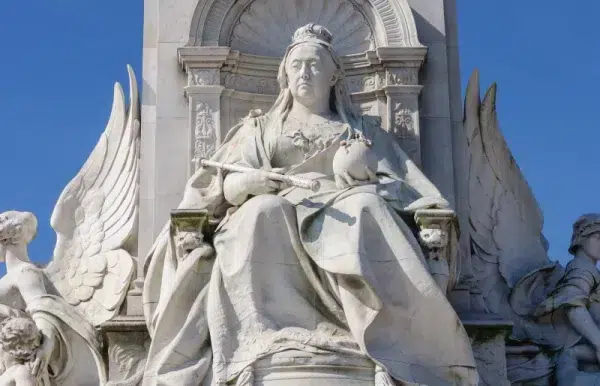In the 19th century, Britain was a mighty empire. It was large, technologically advanced, and respected around the globe. This was all made possible thanks to Queen Victoria. She reigned over the empire for 63 years and with a very strong hand. However, the Queen also had a soft side: cute dogs. It’s no secret that Victoria was a big fan of Pomeranians.
These toy pooches won over her heart in 1888. Alexandrina Victoria loved them so much that over the years, there were as many as 35 Pomeranians under her command. So, when did the first doggo pledge allegiance to Her Majesty? Which canines were favored by her the most? Where did this unconditional love come from? Let’s set the record straight!
1761: Queen Charlotte and Her Pomeranians
It all started in the mid-18th century, back when Charlotte, Victoria’s grandmother, married George III, Great Britain’s soon-to-be king. Originally, Charlotte was from a German land called the Duchy of Mecklenburg. Pomerania, a vast territory located between Germany and Poland (and the homeland of Poms), was only a few miles away. At just 17 years old, she was already fascinated by these canines.
So, when she joined her husband in 1761 to become the new Queen, she brought her beloved four-legged buds along. That’s how Pomeranians found their way into Buckingham Palace! Fino, a black doggo, quickly became best friends with King George IV, the newlyweds’ first child. However, most Pomeranians in the royal kennel had white or creamy coats.

1888: Gena, Victoria’s First Toy Dog
Victoria was born in 1819. Edward, her father, was the fourth son of Charlotte and George III. Unfortunately, Edward died less than two years after the future Queen’s birth, making Victoria the rightful heir to Great Britain’s throne. The young lady became the Queen of the UK in 1837 when she was an 18-year-old girl. However, it wasn’t until 1888 that Victoria saw a Pomeranian. But it was love at first sight!
She was on a trip to Italy (Florence), and it took the Queen one quick look to fall in love with Gena, her first Pomeranian dog. More specifically, it was a Volpino Italiano, a Spitz breed with close ties to the Pomeranian canines. It instantly caught Victoria’s eye as the pooch reminded her of Charlotte, her grandmother. Gene weighed 7.5 pounds, had a white coat (with a yellow patch), and won in the very-first Crufts show.
1888–1892: Marco, Beppo, Lina, Lenda, and Their Successors
Gena wasn’t the only Pomeranian to join Her Majesty on her way back to Great Britain, though. The list also included Marco, a handsome 12-pound boy with a red sable coat named after Marco Polo, the famed Italian traveler. Then there were Lina, Lenda, and Beppo. Every single doggo received its fair share of love, but it’s stated that Gene and Marco had a special place in Queen Victory’s heart.
That said, Beppo was much like Gene: white but with a lemony patch. He ranked #3 in Crufts in 1892. During her trip to Florence, the Queen adopted Lenda, a Pom that made her debut at the Kennel Club and almost snatched the golden prize. In 1889, she was mated to Marco and gave birth to Nino and Fluffy. Lina was also mated with Marco and brought two babies into the world in 1891 (Mina and Lulu).
What About the Pups? How Did They Perform?
After the Pomeranian puppies were born, the mating continued. Lenda had another pup with Marco—Alfio—a unique Pom with a red coat that triumphed at the 1894 Crufts. Fluffy mated with Beppo and birthed Glida. Later, both Fluffy and her pup mated with Ruffle, a sable Pomeranian owned by Mrs. Gordon Lynns. Unfortunately, Fluffy and her pups lost their lives during the whelping.
1893: Turi, the Queen’s Favorite Doggo
The Queen adopted Turi, an adorable Pomeranian, in 1893, and it quickly became her new favorite. Her Majesty loved and cared for the dog so much that she asked to bring the pooch to her deathbed. Turi stayed with Victoria on her last days. She passed away in 1901 (January 22nd, to be exact) but had eight full years to spend with the pooch.
There are quite a few photos from the Royal Archive depicting the Queen with this loyal Pomeranian on her side. There was also Zeela, a lovely black dog, but it was slightly overshadowed by Turi. Unfortunately, info on this doggo is very limited, but it’s known that it was adopted around the same time as Turi.
https://www.instagram.com/p/CjdRbFbN-Wa/?utm_source=ig_web_copy_link
1895: Blackie, a Gift from the Prince
The Prince knew very well about Victoria’s love for Poms, and in 1895, he gifted the Queen a charming Pomeranian dog. Nicknamed Blackie, it was tiny (only four pounds) yet playful and full of energy. Originally from Homburg, it was quick to find its place in the Windsor kennel among fellow doggos. When Blackie was a one-year-old pup, he almost died due to exhaustion. Thankfully, the pet was saved.
Pomeranian Dogs: Blessed by the Queen
Today, Queen Victoria is largely recognized as the most famous historical figure to ever own a Pomeranian. And it wasn’t one dog, either. Over the course of her life, she had adopted 30+ pooches from the same breed. They had different coats, but every single doggo was tiny and cute. The Queen imported them from all over Europe, adding new canines to the Royal Kennel in Windsor.
She was also the first to exhibit Pomeranians at Crufts (Gena, Fluffy, and Nino), shining the light on this not-that-famous breed. English folks loved and respected their Queen, so naturally, everything that she was doing (including introducing the world to Poms) resonated with them. That’s why pretty soon the popularity of these dogs went through the roof!
Royal Treatment for Royal Dogs
As the Queen, Victoria had to travel a lot, and the Pomeranians were among her most frequent companions. The train that the Queen used to navigate through the empire had a unique compartment put together for the sole purpose of housing the pooches. More than that, on those trips, every single dog was guarded by policemen. It’s rumored that Victoria was especially fond of the smallest Poms.
She brought their size down from 25–30 pounds to just 3–7 pounds and 6–7 inches. The toy dogs that we’re used to calling Pomeranians have little in common with the original breed. Today, that breed is vastly known as the German Spitz. Back then, it was called the Volpino Italiano or the Florentine Spitz dog. That said, there’s still debate over whether the Queen did make the Poms smaller or not.

Common Victorian Pom Characteristics
The coat of Victoria’s Poms was always thick and long, almost like the doggos were wearing it. The tail was curly, while the ears were tiny yet sharp and pointy. Overall, the canines were well-built, strong, and highly energetic. The foxy head, in turn, gave them that trademark Pomeranian look. As mentioned, most of Her Majesty’s dogs were exhibited at various shows.
However, after a couple of the pets fell ill and passed away, it was decided not to put any of the remaining canines at risk. A quick note: in Slavic languages, po more is roughly translated to “Land by the sea”. The Pomeranian region is, indeed, home to many lakes.
What Other Pets Did the Queen Have?
While the Poms were, indeed, her favorites, the Queen had quite a few pets, such as a Pug, Skye Terrier, Spaniel, several Greyhounds, ponies, and even goats. The list also included a parrot and a donkey. During her days as the Queen, Victoria had 88 smooth-haired Collies, with Sharp, a lovely black-and-white dog, being one of her all-time favorites.
In 1840, she married Prince Albert. The man was also a big fan of dogs and brought a greyhound named Eos with him to the Palace. So, yes, Pomeranians weren’t the only pets (or even dogs, for that matter) in Her Majesty’s collection. Most pets were bought or adopted by the Queen herself, but many were also gifted to her by other royal figures.
Are Pomeranians Popular in the US?
The AKC officially recognized Pomeranian as a dog breed in 1888 (yes, the same year when Victoria got her first Poms from Italy). Before that, these canines weren’t very popular in the States. But, after AKC’s decision, they quickly made it into the list of the ten most owned breeds in the country. By the 1930s, Pomeranians were already among America’s favorite pets, and for the most part, they hadn’t lost their popularity.
Oh, and by the way, Queen Victoria wasn’t the only famous person to own such a dog. For many centuries, these doggies had been the go-to choice for the most fortunate and gifted individuals, including Mozart, Newton, Michelangelo, Emile Zola, and Marie Antoinette. As a loyal, playful, and low-maintenance toy breed, the Pom is fun to have around!
Summary
With Queen Victoria, Britain embraced the Industrial Revolution and became the largest empire the world had ever seen. Back then, Britain was so big that the sun never sat on it! She was a brilliant leader, famously known as the “Grandmother of Europe”. Although a busy woman, she still had time to spend with her favorite toy dogs: Pomeranians.
Victoria took after her mother, Charlotte, and because of her love for this breed, it quickly gained recognition across the globe. Today, we talked about the Queen’s favorite pooches, including Gena, Marco, Turi, and the roles they played in the Royal Canine. If you have a Pomeranian, do your best to treat them like royalty!
Featured Image Credit: PaulHampshire, Pixabay
Contents
- 1761: Queen Charlotte and Her Pomeranians
- 1888: Gena, Victoria’s First Toy Dog
- 1888–1892: Marco, Beppo, Lina, Lenda, and Their Successors
- What About the Pups? How Did They Perform?
- 1893: Turi, the Queen’s Favorite Doggo
- 1895: Blackie, a Gift from the Prince
- Pomeranian Dogs: Blessed by the Queen
- Royal Treatment for Royal Dogs
- Common Victorian Pom Characteristics
- What Other Pets Did the Queen Have?
- Are Pomeranians Popular in the US?
- Summary









